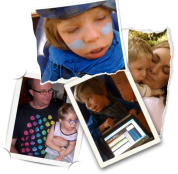As promised for those interested here is a copy of the Microsoft Excel spreadsheet I made for Mac to use at school.
Message me in the comments if you would like to receive copy of the MS Excel template (include your email address) or send me an email at sandgburns [at] bigpond [dot] com with morseSPELL in the subject line.
If you are planning on actually using it for learning then a couple of external options will make this much more user friendly for you.
1. Download the full set of .wav files for each letter and number of morse code from: Morse Code Letter & Numbers http://www.freesound.org/packsViewSingle.php?id=852
2. Trial or purchase the software: Sounding Keyboard and Mouse from http://www.softboy.net/keysound (This allows you to assign any sound to any keyboard or mouse function – see the instructions tab within the file for more details).
So far so good with this program – I was thrilled when I found the Sounding Keyboard software – that made life much easier (and probably saved me from learning a whole lot of computer coding that would only make my head hurt).
I can/will assign a third switch to the TAB so that either Mac or the assistant can use a switch rather than pressing the TAB key. This is just a matter of plugging another switch into the CRICK USB interface.
Mac’s cousins played with the morseSPELL for over an hour tonight – so it can’t be too boring.
It was a funny situation to observe in the lounge room tonight where the kids went from playing the Wii to sitting down and “playing” Morse Code. Interestingly Mac’s Pa had a “real” Morse Code machine in the shed – it’s one he is fixing for someone – so that was out too. Talk about ‘centuries colliding’.
I will add a morseNUMBERS in eventually as well as a morseCONTROL for learning computer controls – but for now, I am happy with morseSPELL which means when the children do LIPI in class (Literacy Skills Program) Mac will have congruency while he too perfects his letters etc.
And just to make me feel like I am on the right track here’s an excerpt from Gaylon Ponder and Ricardo Ortega (AAC Consultants from Words +, Inc) who presented at the CSUN Technology and Persons with Disabilities Conference 2004.
Two-Switch Morse Code
In order to make a letter in Morse Code the client must learn the code. It is unbelievably easy. For instance, an “e” is one switch hit, so is a “t”. Morse Code is nothing more than a different way of writing a letter. In Two-Switch Morse Code one switch sends dots, and the other sends dashes. In order to make an “e” you have to hit the dot switch one time – pretty easy compared to what we had to do to learn to print an “e” with a pencil. A “t” is the dash switch one time. Two dot switch hits is an “i” every time. Three dot switches yields an “s” every time. We learned 26 complicated ways of making letters on paper when we were little kids. In Morse Code we ask the client to learn 26 simple ways of making letters, and provide an easy way for them to do it. The access is direct select without the fine motor and visual load. The client does not need to watch the scanner, or the keyboard. They have to hit switches in the correct sequence within a certain time frame, but not at a specific time.




